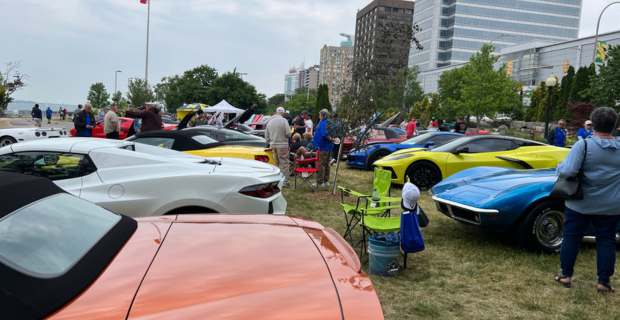Date Published: 2024/03/14
Read Time: mins
Modern collector cars vs classic collector cars

Were you arguing with your friends at the garage whether your 1981 Oldsmobile Cutlass Supreme is a modern or a classic collector car? You will probably be fighting over this one for several more years.
What's the difference between modern vs classic collector cars?
The short answer is age. If the car is built before 1980, it generally falls under the classic car designation. The modern collector car category is generally accepted as vehicles manufactured between 1980 and ten years before the current date.
Mechanically, a modern classic car may feature fuel injection, anti-lock brakes, and requires a computer to diagnose its engine light. But it goes beyond simply stepping across the bridge of a more complicated design. There is that ephemeral look and a limited run that makes the ride both rare and desirable, and thus a collector car.
Is my old Ford now considered a modern classic?
You may wax poetic when talking about your 1989 Ford Taurus, but if it isn't an SHO, it probably doesn't fall under the modern collectible designation. For cars that were commonly seen on Highway 401 travelling into Toronto every day, such as a Toyota Corolla or Hyundai Accent, they typically can just be called old cars.
A modern classic should belong to a limited edition run like a Ford Mustang Cobra R or part of a short-lived badge like the early 2000s Chrysler PT Cruiser.
Look for rare and exciting when buying a modern classic collectible
Some rides are dubbed instant classics as soon as they arrive in showrooms. But that does not mean they will succeed on the collectible car market. This is why we like to wait 10 years before deciding to give a new car entry into this exclusive club.
Supercars tend to earn that collector car badge instantly; Maserati, Ferrari, the Corvette Z06, and Lamborghini continue to dominate the red carpet. But as driver preferences change, we have begun to add other types of vehicles to that collector market, like the G Wagon and Land Rover Discovery.
When shopping for your modern classic, look for a launch edition, a beefed-up power plant with insane horsepower, hand-stitched upholstery, and a carefully documented path of ownership. As the vehicle ages, being able to provide proof of original parts, maintenance, and mileage will continue to add to its value.
Vintage cars: Are they the same as antique or classic collector cars?
Vintage is the new catchword for everything old and desirable. But it does not translate to the collector car market. Vintage cars in judged shows must be built between 1919 and 1930. Antiques are designated as vehicles built after 1930 and before 1975. Classic embraces cars and trucks that continue to be popular throughout the decades with an always changing decade associated with them at different shows.
What kind of collector car is more valuable: classic or modern?
That entirely depends on who is buying at the auction. A 1939 Aston Martin 8C 2900B Berlinetta sold in 2019 for a cool $18.5 million. Then again, a 2013 Mercedes-AMG Petronas F1 race car surpassed that by $300,000.
A vehicle owned by a celebrity will score a higher price compared to the same muscle car found in an abandoned barn. In some instances, restorations done for the rich and famous will also inflate the value of the rat rod.
Investing in your own classic car collection
Ultimately, when you decide that you want to preserve an aging automotive beauty, do it because that unique vehicle brings you joy. As with any collector's market, the value of a particular ride will vary wildly as the years go by. What was once popular can become ordinary. So, the only time that you should worry about whether that Dodge Challenger Hellcat is a classic or a modern classic is when it is being entered at your local car show. Otherwise, enjoy its supple lines, the rumble of its engine, and soft seats for yourself.
Collector car insurance protects your ride for future generations
When you add collector car insurance from Orbit Insurance Services, you are helping that special ride survive through the decades and eventually navigate the transition from a modern to a classic collector ride. Call an Orbit insurance broker at 844-929-7648 to get a free quote.